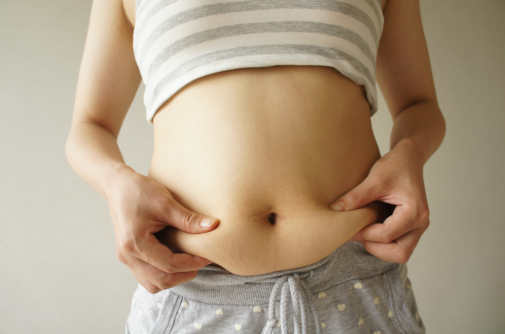Here’s how to lose that “mummy tummy”

Having a baby is filled with lots of firsts and physical adjustments, but the most significant change and focus by mothers seems to be getting rid of the excess weight leftover from pregnancy.
Moms want to get back to the weight and form they were before pregnancy, if not better. Despite efforts to slim back down, it seems the stomach pooch has become a staple of motherhood.
Most of the stomach weight issues stem from diastasis recti, which refers to a separation of the abdominal muscles. The abdominal muscles separate as the growing fetus pushes on a mom’s “six-pack”.
Typically, the rectal abdominal muscles should have not gap in between them and should start on either side of the belly button. During pregnancy, this area separates, but then after pregnancy, generally closes. When it doesn’t, it causes a two-inch gap where there are no muscles holding the stomach, organs and tissues together, thus the origination of the stomach “pooch” from them spilling out and causing lower back pain.
“Diastasis recti is a common issue among the patients I work with,” shares Dr. Humberto Lamoutte, OBGYN at Advocate Sherman Hospital in Elgin, Ill.
“The only way to regain that six pack again is to re-align the abdominal muscles.”
A personal trainer in New York City did some research on how to just that. When searching online for exercises, most of the recommendations were not good. They found that several of the top exercises mentioned for strengthening abdominal muscles are not good for moms with diastasis recti; in fact, they made it worse.
The exercise plan they created was quite simple and effective for the 63 mothers in the study.
Moms in their class were asked to do the following for 10 minutes:
- Pick a position
- Sit in one of these positions: Cross-legged on the floor, on your knees, standing with knees slightly bent, on all fours or laying on your side
- Make sure your back is always flat
- Put hands on your stomach with fingertips near the belly button
- Take a deep breath to inhale and let the stomach expand
- Then exhale, sucking in the tummy — as far back as you can go, toward the spine.
- Hold that position
- Take tiny breaths, and with each exhale, push the stomach further back to the spine
- Change position every two minutes
After three weeks, the 63 mothers had all closed up the gap; some had even delivered a year ago, and lost an average of two inches off their waist.
“Patients do ask me if they can get rid of or avoid stretch marks,” comments Dr. Lamoutte. “But so far, there is nothing safe out there to prevent or lessen them from happening.”
Dr. Lamoutte suggests focusing on the health of your abdominal muscles before, during and after pregnancy to prevent and encourage the health of your stomach. Take a yoga or class or exercise at home.
Related Posts
Comments
3 Comments
About the Author
Jennifer Benson, health enews contributor, is coordinator of public affairs for Advocate Health Care and Aurora Health Care. She has 10+ years of community development and communication experience for non-profits and has a BA in Architecture from Judson University in Elgin, IL. Outside of work, you can find her planning the next adventure near water or rocks, re-organizing spaces, working on her Master’s in Public Health, caring for her senior citizen cat, keeping to healthy moving and eating disciplines and growing green things wherever she can find room.


















Will this work for moms who gave birth more than a year ago?
my grandmother, mother, and then I, used cocoa butter to sooth our expanding tummies during pregnancies. it came in a tube, like chap stick. now there are jars of coconut oil (to use in cooking or beauty). the important parts are: 1) use morning, and night, each day and 2) reach around and massage into your skin, from the butt/waist all the way around to the belly button, from under the ribs to your natural hairline/pelvic area (trust me, your body will stretch in this entire area). this can be messy, but that’s why you have large towels. just don’t shower after the treatment (before is fine). rest at least 1/2 hour, and then you can pat dry. a great side effect, you will have the softest hands, in your lifetime!
Applying coconut oil and shea butter to your skin is not a “treatment”; it is an old wife’s tale. As the article clearly states, as well as the label of any product for stretch mark reduction, there is no current treatment that can prevent or reduce stretch marks.
Coconuts and shea nuts are tree nuts. So, however nice they may feel on your skin, you should be careful and possibly consult your doctor before using either on your skin.